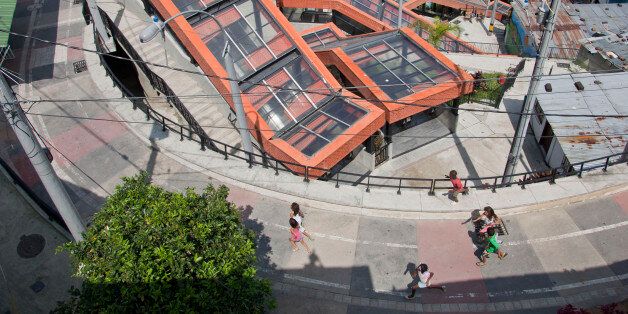
The Medellín Cartel, headed by Pablo Escobar, perhaps the only drug lord to become a worldwide household name, transported billions of dollars worth of cocaine, which had surpassed coffee as Colombia’s leading export by 1982. Arriving on U.S. shores, the exploits of cocaine cowboys made Miami the murder capital of the world in the early ’80s, an ignominious title Medellín itself stole in 1991, when it topped out at 381 murders per 100,000 residents, 40 times what the United Nations considers “epidemic.” That rate, if translated to New York City, would equal an unfathomable 32,000 murders annually.
In 1993, Escobar was killed by Colombian special forces, and a decade later, in 2004, the city’s first Metrocable gondola line opened, inaugurating Medellín’s now celebrated urbanismo social (social urbanism) agenda. Now, ten years after that gondola first connected the city’s poorer hillside neighborhoods to its bustling central business district, Medellín finds itself on the global stage once again, this time as a city basking in the glow of admiration for pioneering a new type of urbanism. The city’s newfound fame will be on full view for attendees of next week’s UN-Habitat World Urban Forum (WUF).
